 Biblio
Biblio
Steganography is a method of hiding information, whereas the goal of cryptography is to make data unreadable. Both of these methodologies have their own advantages and disadvantages. Encrypted messages are easily detectable. If someone is spying on communication channel for encrypted message, he/she can easily identify the encrypted messages. Encryption may draw unnecessary attention to the transferred messages. This may lead to cryptanalysis of the encrypted message if the spy tries to know the message. If the encryption technique is not strong enough, the message may be deciphered. In contrast, Steganography tries to hide the data from third party by smartly embedding the data to some other file which is not at all related to the message. Here care is to be taken to minimize the modification of the container file in the process of embedding data. But the disadvantage of steganography is that it is not as secure as cryptography. In the present method the authors have introduced three-step security. Firstly the secret message is encrypted using bit level columnar transposition method introduced by Nath et al and after that the encrypted message is embedded in some image file along with its size. Finally the modified image is encoded into a QR Code TM. The entire method has also been implemented for the Android mobile environment. This method may be used to transfer confidential message through Android mobile phone.
Remote user authentication using smart cards is a method of verifying the legitimacy of remote users accessing the server through insecure channel, by using smart cards to increase the efficiency of the system. During last couple of years many protocols to authenticate remote users using smart cards have been proposed. But unfortunately, most of them are proved to be unsecure against various attacks. Recently this year, Yung-Cheng Lee improved Shin et al.'s protocol and claimed that their protocol is more secure. In this article, we have shown that Yung-Cheng-Lee's protocol too has defects. It does not provide user anonymity; it is vulnerable to Denial-of-Service attack, Session key reveal, user impersonation attack, Server impersonation attack and insider attacks. Further it is not efficient in password change phase since it requires communication with server and uses verification table.
As most of the modern encryption algorithms are broken fully/partially, the world of information security looks in new directions to protect the data it transmits. The concept of using DNA computing in the fields of cryptography has been identified as a possible technology that may bring forward a new hope for hybrid and unbreakable algorithms. Currently, several DNA computing algorithms are proposed for cryptography, cryptanalysis and steganography problems, and they are proven to be very powerful in these areas. This paper gives an architectural framework for encryption & Generation of digital signature using DNA Cryptography. To analyze the performance; the original plaintext size and the key size; together with the encryption and decryption time are examined also the experiments on plaintext with different contents are performed to test the robustness of the program.



